Our food system depends on a small number of highly uniform crops – which are vulnerable to risks such as climate change. Diversity of food is vital for a sustainable food future
The war in Ukraine is just over a month old and its effects on global food supplies are already stark. Ukraine, commonly known as the breadbasket of Europe due to its vast wheat fields, continues to suffer bombs destroying its agricultural land and ships halted from leaving Black Sea ports, forcing the flow of food from the country to be cut almost completely.
“There’s just no flow of the cheapest origin wheat,” explains Michael Magdovitz, a senior commodity analyst at Rabobank. Much of Ukraine’s wheat is destined for the Middle East and North Africa, where food security for millions of citizens is now a serious concern. The UK relies on Ukraine for 20% of its sunflower oil, meaning food manufacturers are now desperately searching around for alternative supplies in order to maintain production. “We were unprepared,” says Magdovitz, “and we’re further unprepared for any minor supply issues.”
Ukraine will not be the final threat to future food supply. Some will be minor, some may even be worse. Particularly when it comes to the climate breakdown. At the end of February, the UN’s Intergovernmental Panel on Climate Change (IPCC) reminded us that the world is on a path to exceed 1.5°C warming within the next decade, a destination that holds particularly devastating consequences for food and water supply.
In my book, Eating to Extinction: The World’s Rarest Foods and Why We Need to Save Them, I argue that one of the ways we can try to avoid some of the very worst consequences of increasing global instability and the impact of climate change is by halting the relentless spread of homogeneity through the global food system, supporting agro-biodiversity and enhancing more traditional approaches to farming and food production.
In short, if we can stop foods, knowledge and skills going extinct, we can give ourselves the best possible chance of adapting. By investing in diversity, we can build greater resilience into supply chains and increase their sustainability in every sense of the word.
Before writing the book, I spent more than a decade travelling the world meeting farmers, scientists, cooks and campaigners saving ancient wheats, growing rare varieties of rice and conserving breeds of livestock on the brink of disappearing. What I found and documented weren’t quaint and redundant traditions, but clues to a more secure food future.
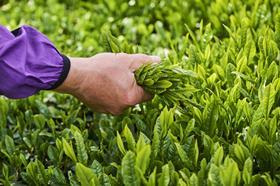
6,000
plant species are cultivated for food worldwide
200
make significant contributions to food production
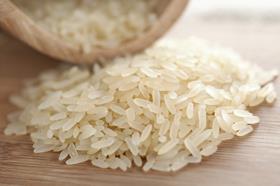
9
account for two thirds of all crops
3
provide half of all calories
Of the 6,000 plant species humans have eaten over time, the UN’s Food and Agriculture Organization calculates that three – rice, wheat and corn – provide 50% of all calories. Add in potato, barley, palm oil, soy and sugar (beet and cane) and you have 75% of all the calories that fuel our species.
And consider these facts: the seeds that give rise to those crops are mostly in the control of just four corporations; half of all the world’s cheeses are produced with bacteria or enzymes manufactured by a single company; one in four beers drunk around the world is the product of one brewer; from the US to China, most global pork production is based around the genetics of a single breed of pig; and, perhaps most famously, though there are more than 1,500 different varieties of banana, global trade is dominated by just one, the Cavendish, a cloned fruit grown in monocultures so vast their scale can only be comprehended from the view of an aeroplane.
All the while, hundreds if not thousands of crop and livestock varieties that have fed people for millennia are being lost. One is kavilca, an ancient wheat species known as emmer, eaten over 5,000 years ago by the builders of the Egyptian pyramids and Stonehenge. Towards the end of the 20th century, kavilca was thought to be extinct, but in 2018 I found a handful of farmers in eastern Turkey growing this disease-resistant, delicious and highly nutritious grain close to the Fertile Crescent where wheat was first domesticated over 10,000 years ago.
Kavilca has genetic traits we will need in the future. In harsh, damp and high-altitude conditions, the grain grows organically, without the need for chemical inputs like fossil-fuel dependent fertilisers. With local government support and the encouragement of chefs and scientists, determined farmers have gone from saving a crop from extinction to developing lucrative supply chains into Turkey’s cities.
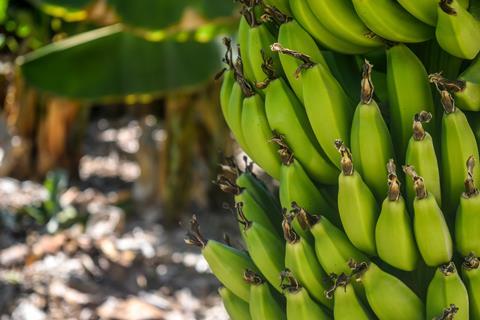
Given the world is projected to hold nearly 10 billion people by 2050, the disappearance of an ancient wheat like kavilca might seem an irrelevance. Surely what the planet needs is more food, and therefore higher-yielding modern wheats is where the focus should be? In fact, what we’re starting to realise is the opposite: that our monocultural food system has steered us into immense trouble. Agro-biodiversity is essential for the future.
Emmanuel Faber, former CEO of Danone, argued as much in 2019, telling the UN’s 2019 Climate Action Summit that the world’s existing food system was at a dead end. “We thought our science could change the cycle of life and its rules,” he told delegates, but instead, “the resulting monocropping consequences are standing right in front of us… in a nutshell we have broken the cycle of life and the missing link is the biodiversity in our fields.”
Faber pledged that day Danone would use its thousands of brands to help “create a demand for a variety of crops of species of traditional seeds that are forgotten today and dying”. It won applause from the audience, but Danone’s major shareholders weren’t so impressed. Within months, Faber was ejected from the board, evidence of a rift between the “staunch supporters of sustainable capitalism and hard-rugged corporate activists”, according to Forbes. Now two years on, there is a mounting body of proof Faber’s analysis is correct.
“We need to pay more attention to the diversity of edible plants to understand how they can contribute to human nutrition”
Long before the war in Ukraine jeopardised global grain supplies, an uneasy reliance on high-input monocultures was revealing itself in the fragility of global food supplies. The threat to the Cavendish banana caused by Panama disease (or TR4) is the most famous example of a crop under threat, but there are many more: fungal diseases, including Fusarium head blight and wheat blast, are now causing billions of pounds of losses to wheat farmers on several continents. Meanwhile, corn growers face increasing risk from tar spot and leaf streak.
Rice, another crop that became higher yielding yet genetically uniform during the 20th century’s agricultural revolution, is also at risk from more virulent diseases. The grain is consumed by more than 50% of the world population and in parts of Asia contributes between a quarter to a half of total calories. Worryingly, however, a single fungal disease – Magnaporthe oryzae – can cause yields to drop by up to 80%. The lost production each year could feed 60 million people.

The list goes on, with climate change increasing the virulence and reach of each of these threats. In 2017, an international team of crop scientists modelled the impact of rising temperatures on yields of the major crops. Their research showed that “each degree-Celsius increase in global mean temperature would, on average, reduce global yields of wheat by 6%, rice by 3.2%, maize by 7.4%, and soybean by 3.1%”.
It’s a sobering thought, but there is cause for optimism. Wherever you look in the world, you can find people working to save endangered food and preserve the diversity we all need. In India, farmers are reintroducing native varieties of millet, a nutrient-packed and diverse cereal that sustained generations of people before British colonisers came with bread wheat and cash crops. In London, a team of researchers have rediscovered a coffee species thought to be extinct but which may now offer coffee farmers greater resilience against high temperatures and drought.
Meanwhile, many of the most influential agricultural research centres in the world, such as Rothamsted and the John Innes Centre, are investigating ancient crops such as the Turkish emmer wheat kavilca, working to identify the genetic traits which farmers may soon need to improve the resilience of their modern wheat varieties.
The food industry is also playing its role in the revival of endangered foods. NaturaYuva, a Swiss supplier of medicinal and aromatic plants, is working with 30,000 farmers across 100,000 hectares of land in India to revive traditional ingredients and use them in a range of newly developed products. By 2035, its founder Arko Chatterjee says it is on target to save 3,500 endangered species, launch more than 50 new novel ingredients, generate €1bn in revenue, and improve the livelihoods of 100,000 smallholder farmers.
It is far from alone. Across the world, more and more businesses are building a business model with diversity at its core. Hodmedod’s, for example, a UK-based supplier of beans and pulses, is reviving pulses such as the fava bean, once a staple food in Britain that dates back to the Iron Age. Although small in size, the business is part of a growing network of European brands reviving lost or neglected legumes across Europe, including Nordisk Råvara in Sweden and Lauteracher Alb-Feld-Früchte in Germany.

Livestock genetics
A similar story is emerging in livestock. In poultry, after many decades in which genetic uniformity has been a primary driving force, breeding programmes are now addressing welfare problems by adding greater diversity into flocks. Around 1,500 locally adapted indigenous breeds are thought to exist globally, each of which is genetically diverse, highly adapted to their surroundings, and has evolved to scavenge in a wide range of different environments.
In less developed economies, these indigenous birds still provide around half of all the poultrymeat and eggs people eat, but as commercial farming operations spread further around the world these local breeds are being lost.
In an increasingly unpredictable world facing the impact of climate change, the diversity of these animals may one day prove to be an essential source of variety as we look to adapt to a changing world.
By the early 2000s, three companies had come to dominate the world’s poultry genetics: Cobb, Aviagen and Hubbard. In 2018, this was effectively cut to two after Aviagen took over Hubbard. These two companies now own the genetics behind the world’s most dominant broiler breeds including the Cobb 500, the Ross 308 and the Hubbard Flex.
Their domination of the sector with these valuable and patented breeding lines is the result of millions of pounds of investment and years of research by the poultry companies. The birds developed are all capable of growing to around two kilos in roughly 35 days. This means the greatest amount of meat is produced using the least amount of feed, in the shortest amount of time. Commercially, the reasons look clear.
“We have broken the cycle of life and the missing link is the biodiversity in our fields”
However, faster growth rates can contribute to increased risk of lameness, higher levels of mortality, and birds less likely to display natural behaviour (such as foraging and dust-bathing). This is why, particularly in the Netherlands, slower-growing breeds of commercial chickens are gaining popularity, underpinned by the standards of the Better chicken Commitment. This does, however, mean higher prices.
So why would consumers become more interested in exploring greater diversity? One simple reason is self-interest, as diversity can bring with it a range of health benefits. In the UK, scientists from the Royal Botanic Gardens, Kew and Imperial College London recently published research identifying more than 1,000 nutrient-rich plants that are currently underutilised. Among them is fonio, a type of grain native to the savannas of West Africa. This fast-growing source of food is highly resistant to hot and dry climates and is considered to have huge potential for the future.
As lead author of the paper, Aoife Cantwell-Jones, explains: “We need to pay more attention to the incredible diversity of edible plants to better understand how they can contribute to human nutrition and what we need to do to preserve them for future generations.” For our own health and that of the planet, we need to save endangered foods.
The war in Ukraine is driving calls for Europe to reduce its dependence on Russian energy and for an increase in the diversification of supply. The same is just as true of food. We are too dependent on a small number of highly uniform crops which are becoming increasingly vulnerable to future risks. Like any sensible investor with an eye to the future, we need to have a much broader portfolio. That is why diversity of food is not just a nice-to-have, but a crucial part of ensuring we have a sustainable food future in the years to come.
The foods on the brink of extinction (and how we can bring them back)

Our food system depends on a small number of highly uniform crops – which are vulnerable to risks such as climate change. Diversity of food is vital for a sustainable food future
 Currently
reading
Currently
reading
The foods on the brink of extinction (and how we can bring them back)
- 2











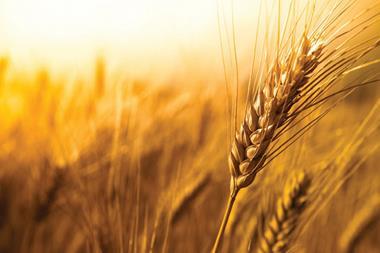

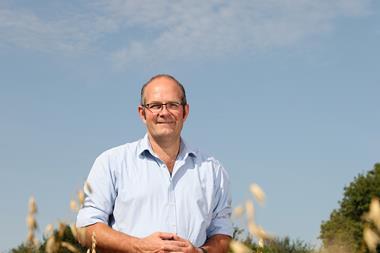

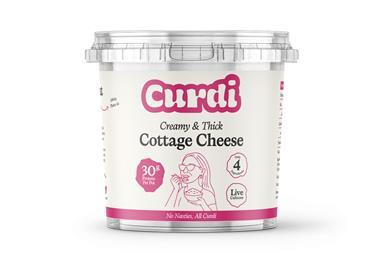







No comments yet